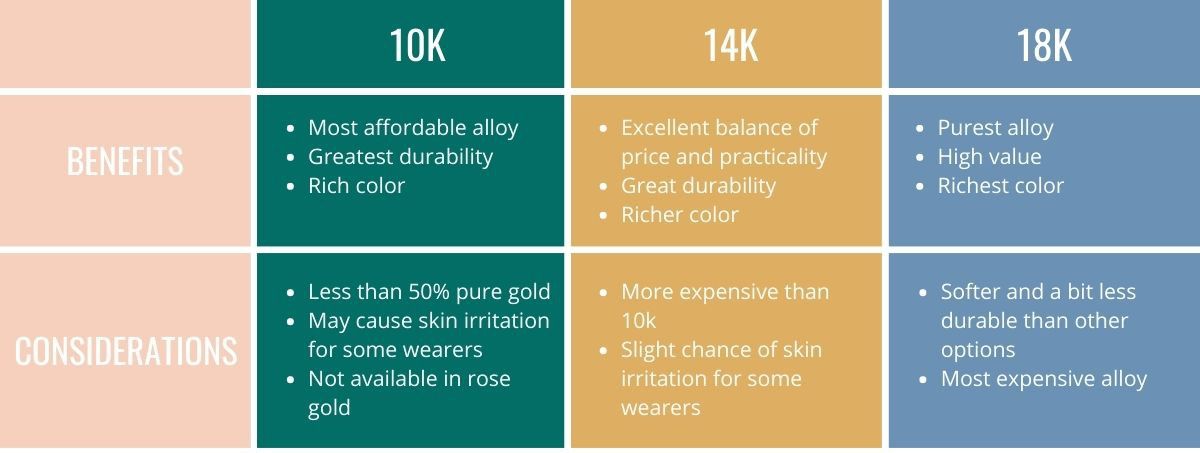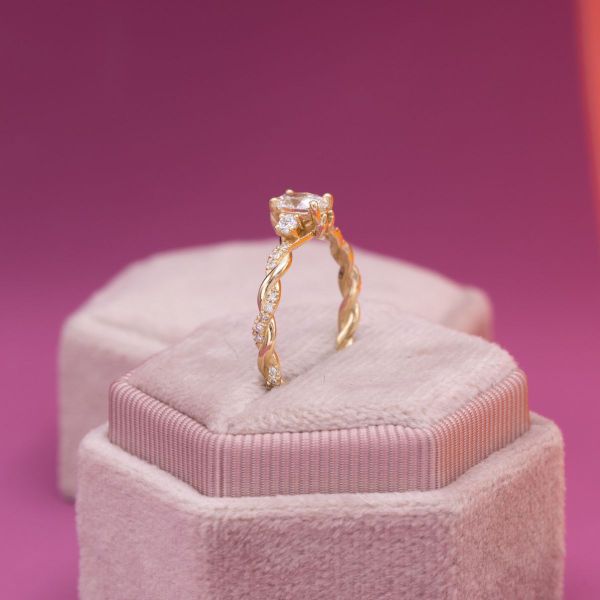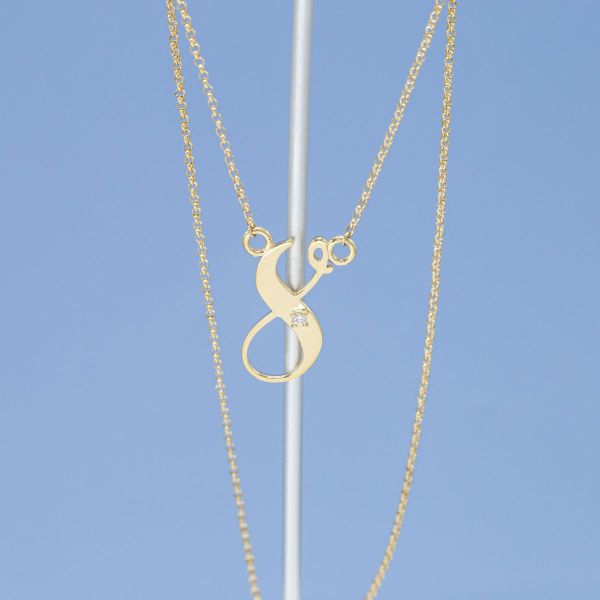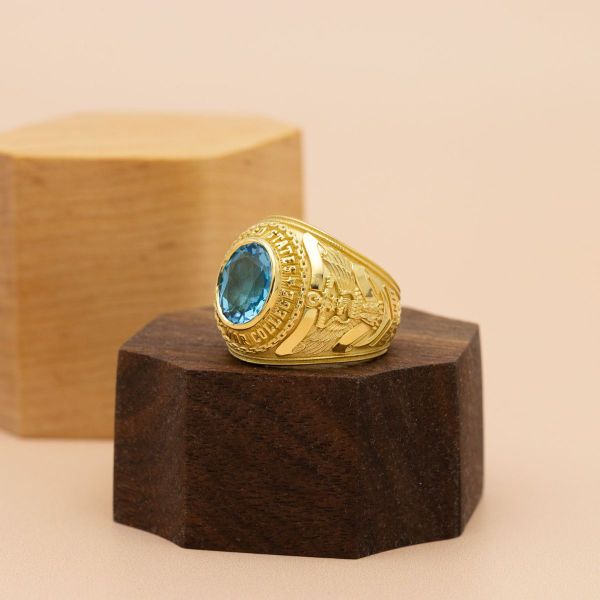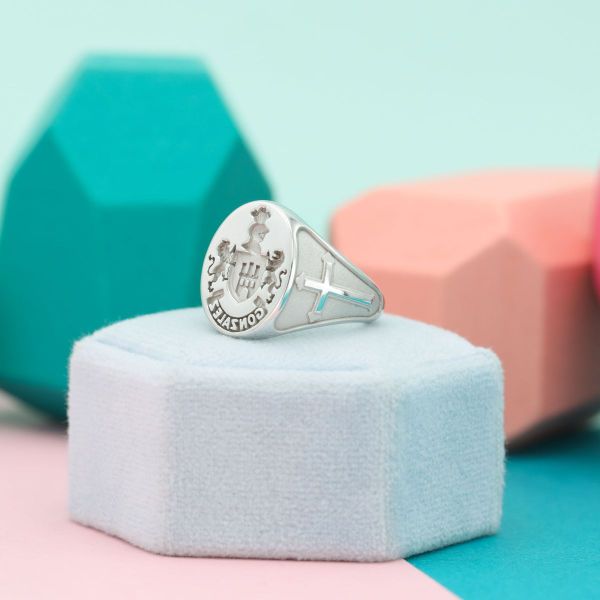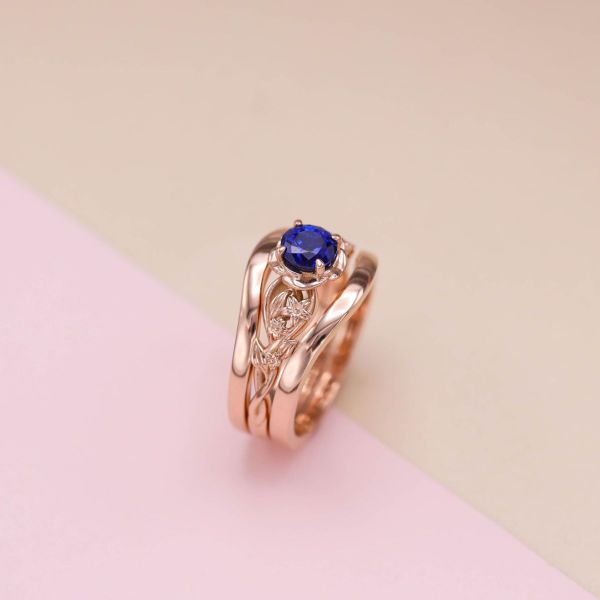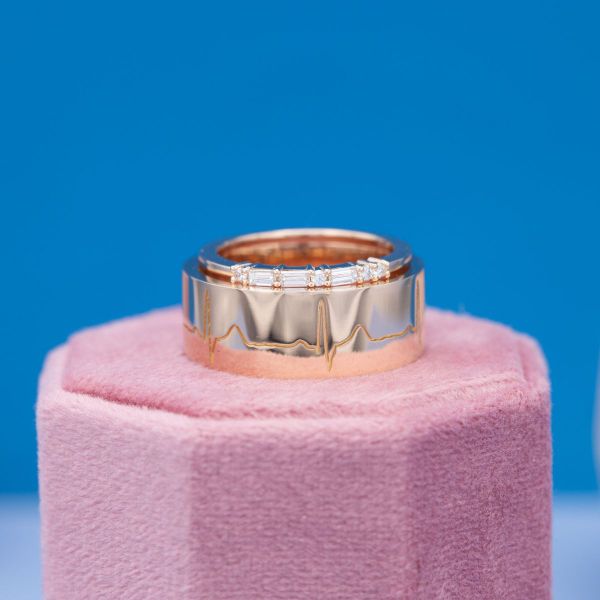Metal Knowledge
Which gold karat is right for you?
CustomMade offers yellow, white, and rose gold in multiple karats, but which one best suits your needs?
Comparing karats
10k and 14k and 18k, oh my! There are a few common karats of gold to choose from, but which one is right for your custom piece? Each gold alloy has its upsides, and there may even be subtle changes in appearance among them depending on the color of gold you choose. The color and karat of your gold alloy are two big decisions when crafting a new piece of jewelry, so let’s dive into what differentiates 10k, 14k, and 18k.
What is karat?
You’ve probably seen the term karat when perusing different metals (not to be confused with carat which refers to gemstone weight, or carrot which is a tasty vegetable loved by rabbits), but what does it mean? Karat refers to how much pure gold is in an alloy, noting how many parts gold and how many parts other metals make it up.
These parts add up to 24, and at the top of the list with 100% pure gold is 24k (which is far too soft for most jewelry, despite what singers and celebrities might want you to believe). You can think of each gold alloy much like making a mimosa: you may prefer 4 parts OJ (other metals) to 1 part champagne (gold), or maybe you like a stiffer drink with 1 part OJ to 4 parts champagne (rock on, you party animal!). At CustomMade, we offer 10k, 14k, and 18k gold options for the best balance of durability and value.
Yellow gold
For a pocketful of sunshine, sunny yellow gold holds its own as a popular metal choice for engagement rings and custom pieces alike. We offer 10k, 14k, and 18k yellow gold, and these three alloys can provide somewhat varied looks and different benefits.
10k yellow gold is 10 parts gold to 14 parts other metals, making it the most durable yet affordable choice. While it still has a sunny yellow shine, 10k yellow gold has the least rich color of the three karat options and is less than 50% pure gold.
14k is one of our favorite options, with 14 parts being pure gold and 10 parts other metals. 14k is the happy medium between 10k and 18k, offering an excellent balance of price and practical benefits, like durability and richness of color.
18k yellow gold is… you guessed it! 18 parts gold and 6 parts other metals, making it the highest pure gold ratio of our karat options. This higher concentration of gold makes it the richest in color, but also the softest when it comes to durability. 18k is also going to have the highest price point of our three yellow gold karat options.
White gold
White gold is an incredibly popular option for jewelry across the board, and its soft, muted tone can fit just about any aesthetic. Similarly to yellow gold, we offer 10k, 14k, and 18k options so you can choose the best alloy for your needs.
10k white gold is going to be your most cost-conscious option, offering you a bright white color and great durability for a budget-friendly price.
For white gold, 14k provides the best of both worlds. It offers great durability and scratch resistance for a price that falls between 10k and 18k.
18k white gold has the highest percentage of pure gold, making it the most luxurious choice, but also the highest risk of scratching as well as the highest price point.
Notice we didn’t mention varying degrees of white color for each karat option? That’s because all three white gold alloys are all equally white! White gold naturally has a slightly golden hue, so it’s rhodium plated for a bright white shine, requiring replating every 3-5 years.
We do offer another white gold option: a 14K white gold palladium alloy. It’s naturally bright white and doesn't need any rhodium plating, and bonus: it’s hypoallergenic! It costs a bit more than the other three options upfront but requires less maintenance.
Rose gold
With its bubbly blush hue, rose gold is a great option for true romantics and lovers of unique jewelry metals. We offer 14k and 18k rose gold alloys for you to choose from. But wait, what happened to 10k rose gold? You caught us: 10k rose gold does exist, but it’s very brittle and not ideal for everyday wear, so we stick to reliable 14k and 18k rose gold alloys.
For rose gold, regular gold is alloyed with copper, silver, and zinc to create that unique color. With 14k rose gold alloy, you’ll notice a more “red rose” hue, and it’s more durable and a bit more affordable than 18k rose gold. In contrast, our 18k rose gold alloy has more pure gold for a pink rose or pink champagne hue.
Which type of gold is best for you?
There’s no all encompassing answer to this question, and the right alloy for you is the one that best meets your needs! For instance, maybe you’ve fallen for the rich yellow hue of 18k yellow gold, or perhaps you appreciate the balanced durability and price of 14k white gold. Whatever you choose, it’s best to find a gold alloy that can handle your activity level and routine. And don’t forget, our team at CustomMade is always here to help you choose the right alloy for your lifestyle and help you build the custom piece of your dreams!
About CustomMade
CustomMade designs and creates one-of-a-kind, custom engagement rings and fine jewelry. Each piece we create is inspired by you, designed for you, and made just for you.
